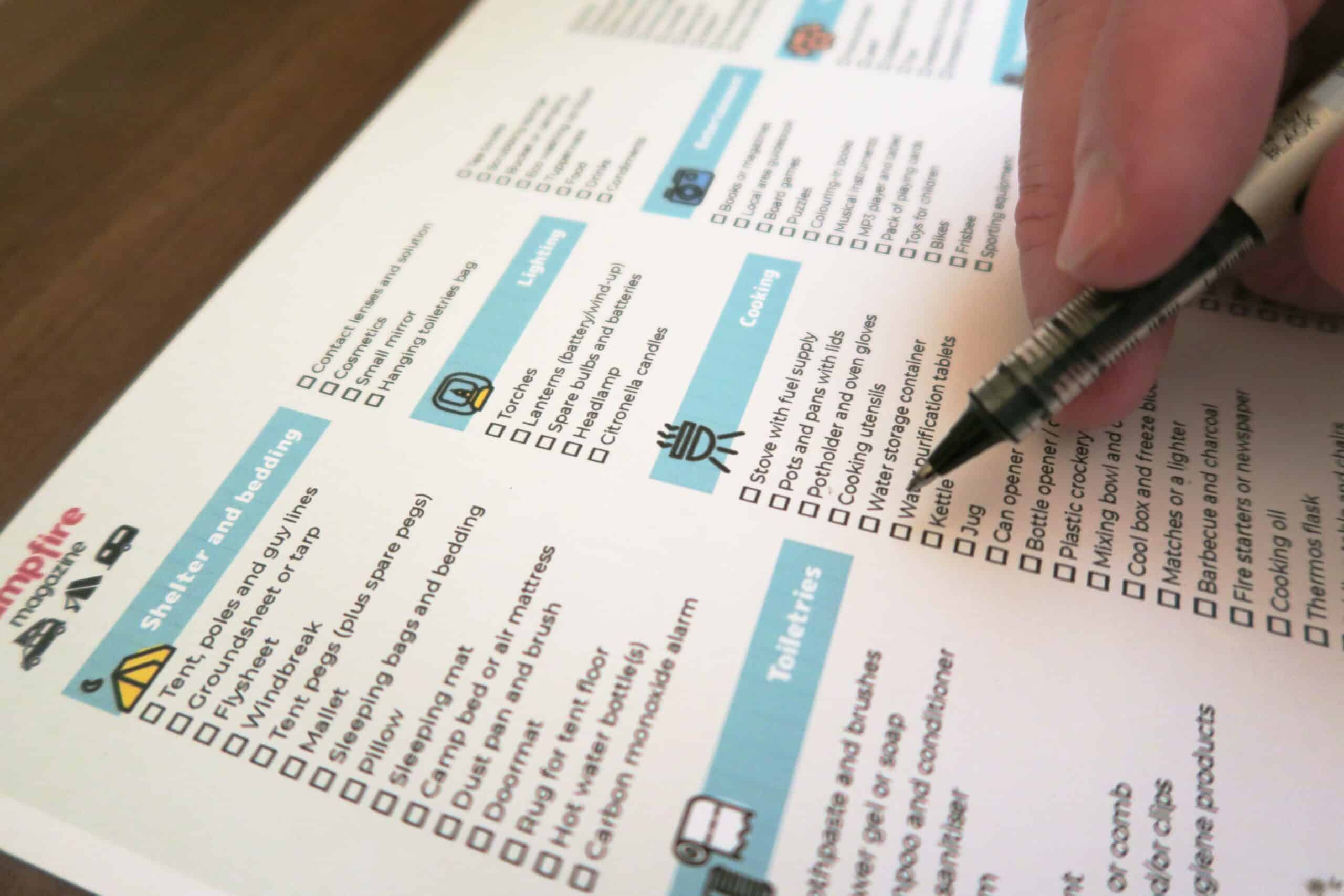Camping is a fun and timeless activity that has been passed down through the generations. Families across the world take comfort in getting together and convening with nature.
Of course, long gone are the days when camping meant living in discomfort. These days, the tent is usually the star of the show.
Sometimes, however, they can be rather drab and boring, especially when they’re a plain white colour. This may prompt you to wonder, can you paint a tent? Don’t worry, this article will tell you everything you need to know.
Can You Paint A Canvas Tent?
The short answer is yes! There are numerous ways to paint a tent. The long answer, however, is that it depends on a variety of factors.
Some types of paints contain harmful or volatile chemicals. Not only could these harm the structural integrity of the fabric but they may also pose hazards for the health of the tent’s inhabitants. After all, you’re going to spend days living and sleeping inside a closed tent, and breathing in toxic fumes can cause immense damage to your health.
The trick is to look for inert paints that are safe to use. An example of this would be acrylic paints which are the most suitable for painting canvas tents due to the fact that they dry quickly and are not particularly harmful or harsh.
If you want a cheaper solution, everyday off-the-shelf markers and pens are also fine. Although it could be a little slow and tricky to paint an entire tent with them!
How to Paint A Canvas Tent
Now that you want to paint your canvas tent, you may wonder how to go about it. Fortunately, we have prepared an easy and convenient guide for exactly this purpose.
Required Items
The first step in painting your tent is to gather all the materials required.
Acrylic Paints
The first and most obvious requirement is the paints themselves. Generally, acrylic paints are recommended as they have strong colours, stick well due to their viscosity, and are safe for use.
Paint Brushes/Rollers
These are needed for applying the paint itself. If you expect to make detailed and intricate patterns, we recommend getting small paintbrushes. If you only want to apply a plain coat of paint, a large paintbrush or paint roller should both be sufficient.
Blue/Painter’s Tape
This tape is useful for covering areas that you do not want to apply paint to. Moreover, it can also help you make straight borders and edges while painting, ensuring that the resultant art looks neat and beautiful!
Stencils
Although optional, stencils can add a lot of artistic value to your painting. You can create a wide assortment of patterns and shapes with relative ease. Moreover, stencils can make the job much easier when making multiples of the same patterns as these are quicker, easier, and more consistent in use.
Seam Sealer
We have saved the most crucial item for last - a seam sealer essentially functions to protect the inside of your tent by covering up the seams and thus preventing extra paint from making its way inside. This is crucial as otherwise, you run the risk of ruining the interior of your home away from home!
Most of the supplies mentioned above should be available online or at any local art store. The seam sealer, however, may not be carried at art stores. Thus, buying a set online or at a specialised store may be your best bet.
A Step-By-Step Guide to Painting
Now that you have gathered all the necessary materials, we can go ahead and start with the activity that everyone has been waiting for - painting!
Prep The Tent and Area
The first step is ensuring that you have prepared your tent for the paint. To do this, open the tent up and have it set up such that there are no huge wrinkles or distortions in the fabric. These could end up ruining the paint job if they slip through.
You should also spread out paper towels or old newspapers around the paint area, wherever you expect the paint to drip down. Not only will this keep everything neat and prevent a mess but your driveway or grass will also thank you for it!
Cleaning The Tent
Before you can go ahead and start painting, it is crucial that the canvas is absolutely spotless. In the case that there is any bird waste, dirt, leaves, or debris on the surface, your paint will not stick. These could leave the final job looking patchy and messy.
If possible, you can use a water hose for the cleaning. In case that is not available, the good old way with a wet wipe and some tissue will also suffice. Just make sure you are thorough and remove any grime on the surface.
Prep The Seams
This step is relatively straightforward, use the seam sealer purchased earlier to cover the seams of the tent. This step requires extra attention to detail as we recommend sealing up every single seam on the tent.
This thoroughness will pay dividends as it will prevent any extra paint drippings from making their way into the interior of your tent and thus ruining it.
Painting
This is the most exciting step of them all. You can finally begin painting! Whether you have a specific design you want to do or you want to go abstract, we still recommend that you paint slowly and think before every stroke. After all, once applied, the paint cannot be removed.
If you have any stencils that you want to use on your tent, this is the time for them as well. Simply apply the stencil to the campus and paint through the space.
Remember to enjoy this part of the process, if need be, get your family involved too!
Final Touches
After getting most of the painting done, we recommend that you let the paint dry for a few hours. During this time the canvas mustn’t be moved or disturbed as that could potentially ruin the paint job.
In case you used any stencils, you can remove them after a few hours too when the paint has dried sufficiently. One thing to note is that during the painting process, there may have been certain spots left paintless or incomplete. Fortunately, acrylic paint is very forgiving in this regard and you can add more paint to empty areas as you see fit.
If you do make more edits to the paint job then you will need to leave the tent out for another few hours to dry. This will ensure that the wet paint does not rub onto the dried paint and ruin all your hard work.
Maintenance Tips
Now that your tent is perfectly painted and ready to go, there are a few things you should know regarding the maintenance of a painted tent.
Firstly, the less sunlight the tent gets the better. UV rays tend to damage and discolour paint, making it fade. Although this is a slow effect, it can become noticeable after a few months or years of use. Thus, whenever possible, keep your tent in the shade, especially when storing it for long periods of time.
Another thing to note is the fact that most paints tend to crumble or crack, especially when handled improperly. Whenever you are packing your tent, we recommend folding it neatly and not crumpling it up. Otherwise, the paint will crack and chip away faster.
Finally, in case the paint does chip away, bring out your trusty acrylic paints and paintbrush and fill in the blanks once again!
Conclusion
Painting a tent can be a fun activity, especially if you do it with your loved ones. Moreover, it can add some much-needed colour to the often drab canvas tents found in the store.
With this guide, you are now ready to go ahead and give your home away from home a personality of its own!

